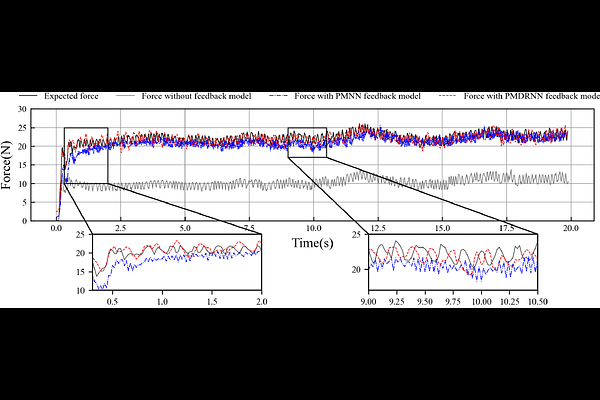Adaptive Tuning of Robotic Polishing Skills based on Force Feedback Model

Adaptive Tuning of Robotic Polishing Skills based on Force Feedback Model
Yu Wang, Zhouyi Zheng, Chen Chen, Zezheng Wang, Zhitao Gao, Fangyu Peng, Xiaowei Tang, Rong Yan
AbstractAcquiring human skills offers an efficient approach to tackle complex task planning challenges. When performing a learned skill model for a continuous contact task, such as robot polishing in an uncertain environment, the robot needs to be able to adaptively modify the skill model to suit the environment and perform the desired task. The environmental perturbation of the polishing task is mainly reflected in the variation of contact force. Therefore, adjusting the task skill model by providing feedback on the contact force deviation is an effective way to meet the task requirements. In this study, a phase-modulated diagonal recurrent neural network (PMDRNN) is proposed for force feedback model learning in the robotic polishing task. The contact between the tool and the workpiece in the polishing task can be considered a dynamic system. In comparison to the existing feedforward neural network phase-modulated neural network (PMNN), PMDRNN combines the diagonal recurrent network structure with the phase-modulated neural network layer to improve the learning performance of the feedback model for dynamic systems. Specifically, data from real-world robot polishing experiments are used to learn the feedback model. PMDRNN demonstrates a significant reduction in the training error of the feedback model when compared to PMNN. Building upon this, the combination of PMDRNN and dynamic movement primitives (DMPs) can be used for real-time adjustment of skills for polishing tasks and effectively improve the robustness of the task skill model. Finally, real-world robotic polishing experiments are conducted to demonstrate the effectiveness of the approach.